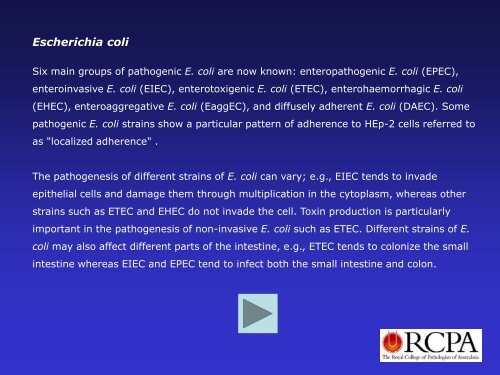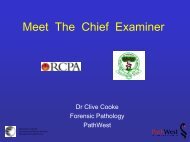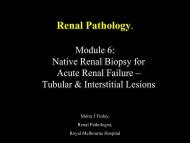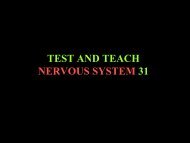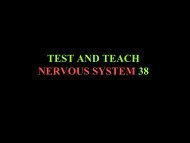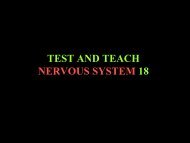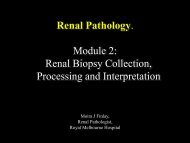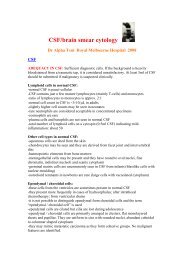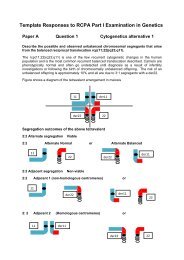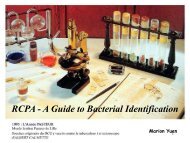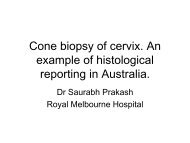Vomiting & Diarrhoea in a nursing home - Rcpa.tv
Vomiting & Diarrhoea in a nursing home - Rcpa.tv
Vomiting & Diarrhoea in a nursing home - Rcpa.tv
You also want an ePaper? Increase the reach of your titles
YUMPU automatically turns print PDFs into web optimized ePapers that Google loves.
Escherichia coli<br />
Six ma<strong>in</strong> groups of pathogenic E. coli are now known: enteropathogenic E. coli (EPEC),<br />
entero<strong>in</strong>vasive E. coli (EIEC), enterotoxigenic E. coli (ETEC), enterohaemorrhagic E. coli<br />
(EHEC), enteroaggregative E. coli (EaggEC), and diffusely adherent E. coli (DAEC). Some<br />
pathogenic E. coli stra<strong>in</strong>s show a particular pattern of adherence to HEp-2 cells referred to<br />
as "localized adherence" .<br />
The pathogenesis of different stra<strong>in</strong>s of E. coli can vary; e.g., EIEC tends to <strong>in</strong>vade<br />
epithelial cells and damage them through multiplication <strong>in</strong> the cytoplasm, whereas other<br />
stra<strong>in</strong>s such as ETEC and EHEC do not <strong>in</strong>vade the cell. Tox<strong>in</strong> production is particularly<br />
important <strong>in</strong> the pathogenesis of non-<strong>in</strong>vasive E. coli such as ETEC. Different stra<strong>in</strong>s of E.<br />
coli may also affect different parts of the <strong>in</strong>test<strong>in</strong>e, e.g., ETEC tends to colonize the small<br />
<strong>in</strong>test<strong>in</strong>e whereas EIEC and EPEC tend to <strong>in</strong>fect both the small <strong>in</strong>test<strong>in</strong>e and colon.


